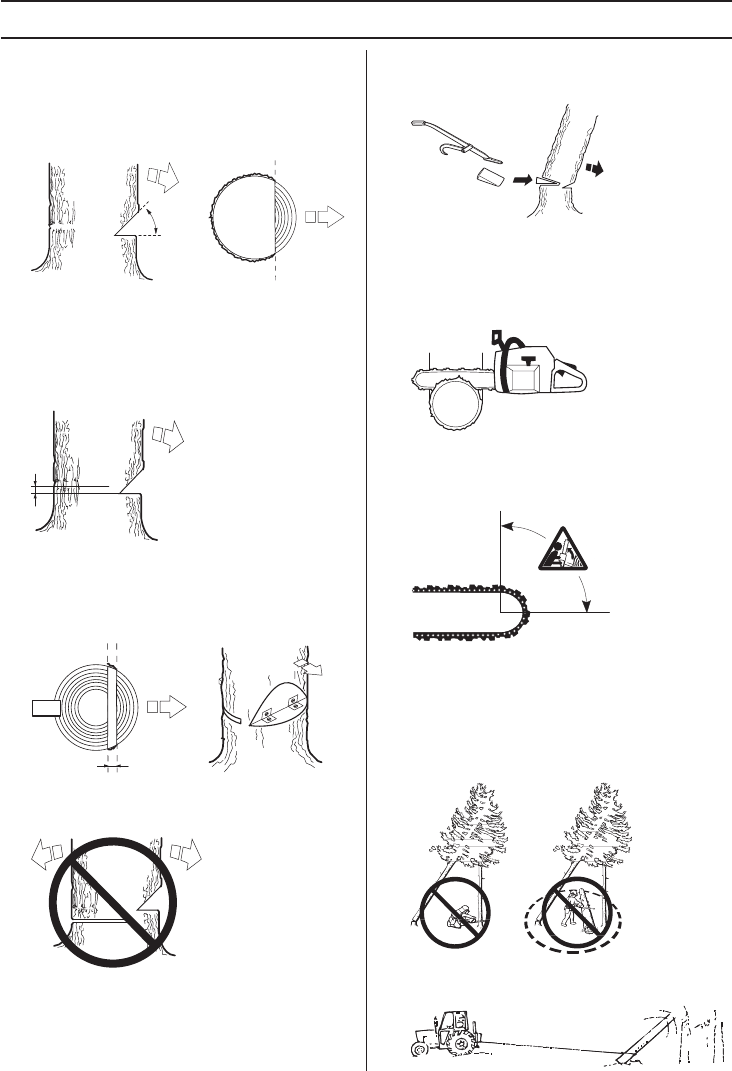
WORKING TECHNIQUES
28 – English
1153137-95 Rev.2 2009-12-29
The directional cuts should run 1/4 of the diameter
through the trunk and the angle between the top cut and
bottom cut should be 45
°.
The line where the two cuts meet is called the directional
cut line
. This line should be perfectly horizontal and at
right angles (90
°) to the chosen felling direction.
Felling cut
The felling cut is made from the opposite side of the tree
and it must be perfectly horizontal. Stand on the left side
of the tree and cut on the pull stroke.
Make the felling cut about 1.5-2 inches (3-5 cm) above the
bottom directional cut.
Finish the felling cut parallel with the directional cut line so
that the distance betw
een them is at least 1/10 of the
trunk diameter. The uncut section of the trunk is called the
felling hinge.
The felling hinge controls the direction that the tree falls in.
All control over the felling direction is lost if the felling
hinge is too narro
w or non-existent, or if the directional
cuts and felling cut are badly placed.
When the felling cut and directional cut are complete the
tree should star
t to fall by itself or with the aid of a felling
wedge or breaking bar.
We recommend that you use a bar that is longer than the
diameter of the tree
, so that you can make the felling cut
and directional cuts with single cutting strokes. See
instructions under the heading Technical data section to
find out which lengths of bar are recommended for your
saw.
There are methods for felling trees with a diameter larger
than the bar length.
However these methods involve a
much greater risk that the kickback zone of the bar will
come into contact with the tree.
Freeing a tree that has fallen badly
Freeing a ”trapped tree”
It is very dangerous to remove a trapped tree and there is
high accident risk.
Never try to fell the tree that is trapped.
Never work in the risk zone of the hanging trapped tree.
The safest method is to use a winch.
• Tractor-mounted


















